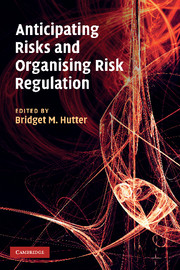Preface
Published online by Cambridge University Press: 10 November 2010
Summary
Risk regulation in the twenty-first century struggles with new risks and finding better ways of organising to anticipate and control them. Science and technology develop in new directions; the interconnectedness between local and distant infrastructures and communication channels are increasing; and businesses, politicians and regulators try to develop improved social and organisational sources of resilience. In so doing new regulatory spaces are sought out and exploited and in turn, some of these become the source of new unintended regulatory risks. The anticipation of risks and their control can only go so far and sometimes we have seen unrealistic expectations of control emerge. These are the issues which mould this book. The various chapters address how we organise at a social, organisational and regulatory level to cope better with the array of local and transnational risks we encounter. This necessarily raises questions about resilience, innovation and their limits especially in a global setting. This volume argues that we are witnessing attempts to reposition from expectations of total security and resilience to a more balanced and nuanced approach which accepts that zero tolerance is neither achievable nor even desirable.
The objective of this edited volume is to provide a high-profile collection of papers by scholars from a variety of disciplines, including finance, history, law, management, political science, social psychology, sociology and disaster studies. Substantively it considers threats, vulnerabilities and insecurities alongside social and organisational sources of resilience and security.
- Type
- Chapter
- Information
- Anticipating Risks and Organising Risk Regulation , pp. xiii - xivPublisher: Cambridge University PressPrint publication year: 2010

